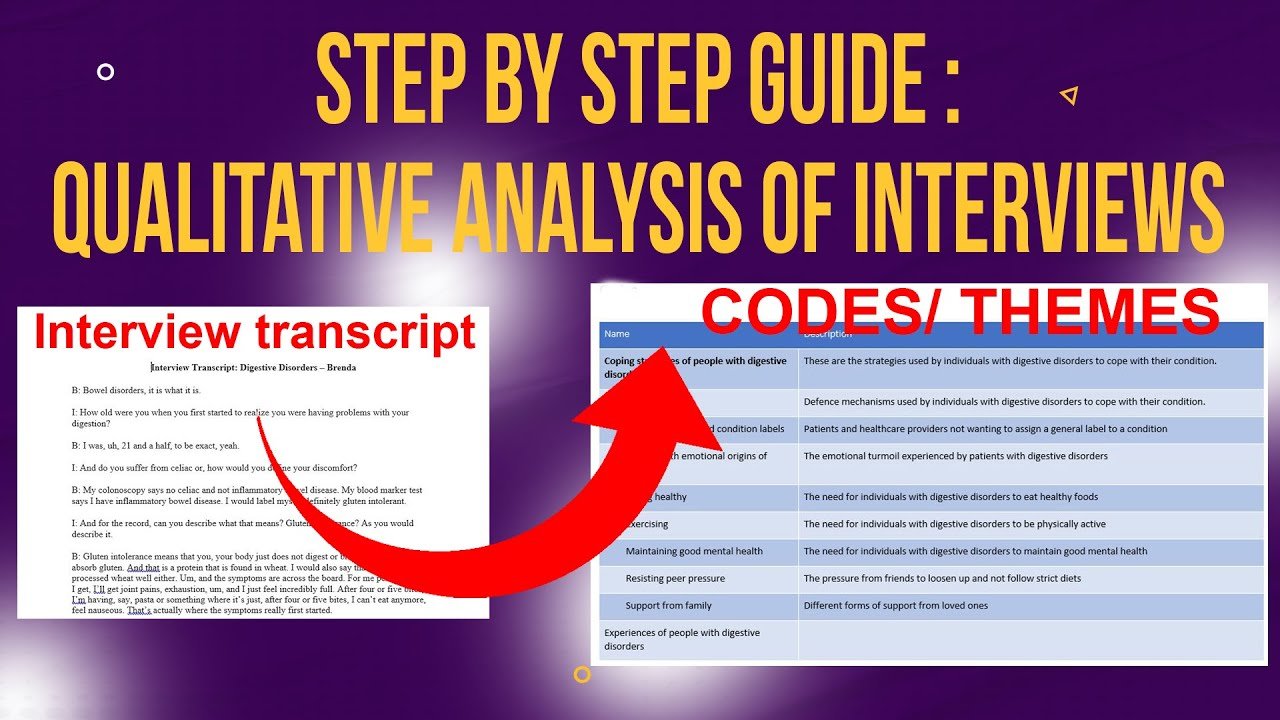How to Report Findings after Performing Data Analysis with Nvivo
In my past articles I have explained the different steps we take to go from raw qualitative data to obtaining themes from such data.
In this article, we will examine how we can report our findings after conducting qualitative data analysis in Nvivo.
Now, I’ve previously covered the steps that we take to code our data, and then the steps that we take to go from codes to having themes.
You’ve reached a point where you’ve analysed your data, for instance, through the use of the Braun and Clarke six step framework for thematic analysis.
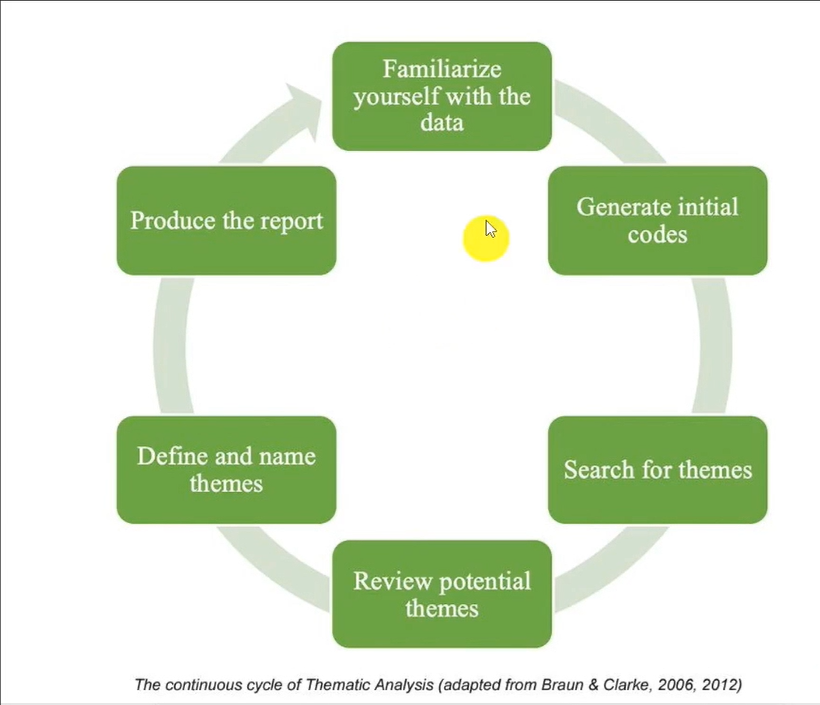
The Braun and Clarke Six Step Framework
You have followed through all these steps, and now you have something like this in your work.
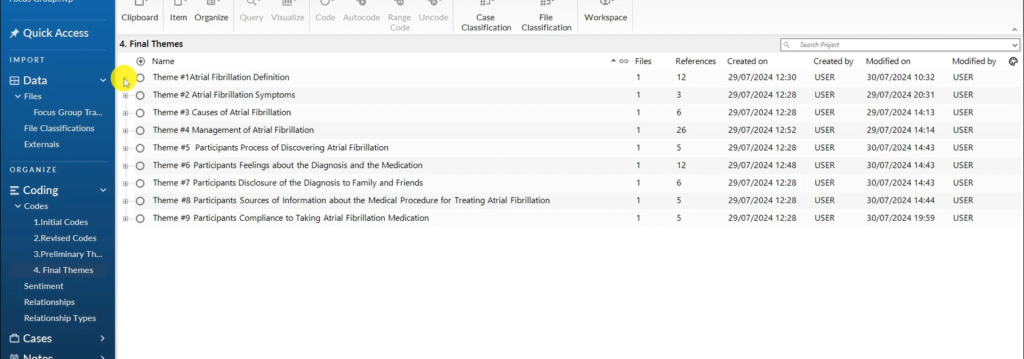
Themes Formed after Thematic Analysis
You have themes, well defined, some instances, you have sub themes and codes.
So how do we get all this information out of Nvivo to findings report that is a written document like this.
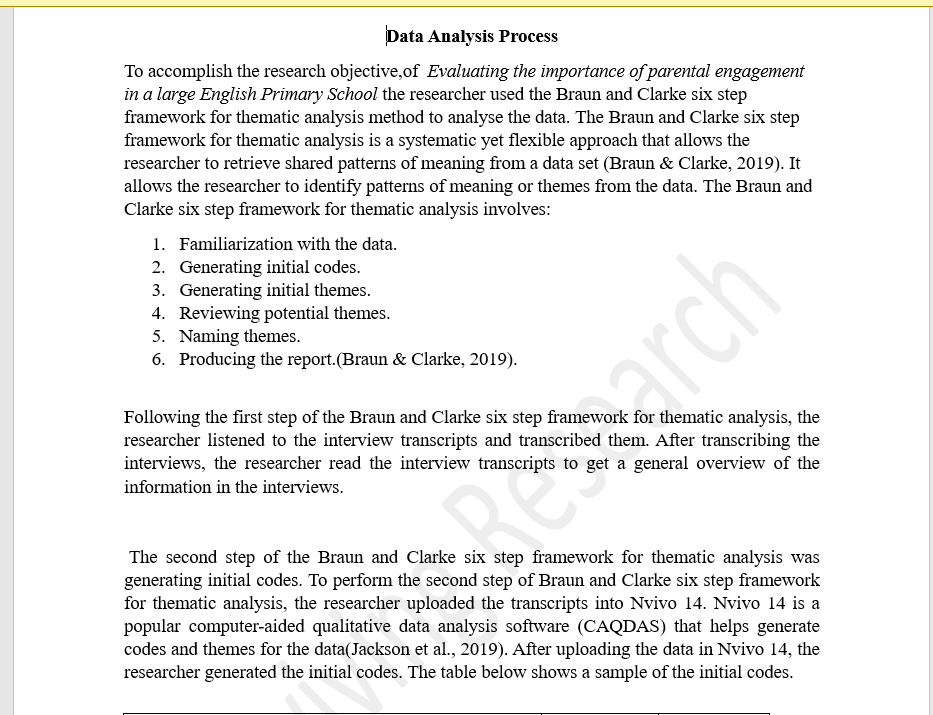
A Findings Report
Now, the first thing that you have to do when reporting your findings after conducting qualitative data analysis is to highlight the steps that you use to analyse the data.
This is called the data analysis process, the first section of the report.
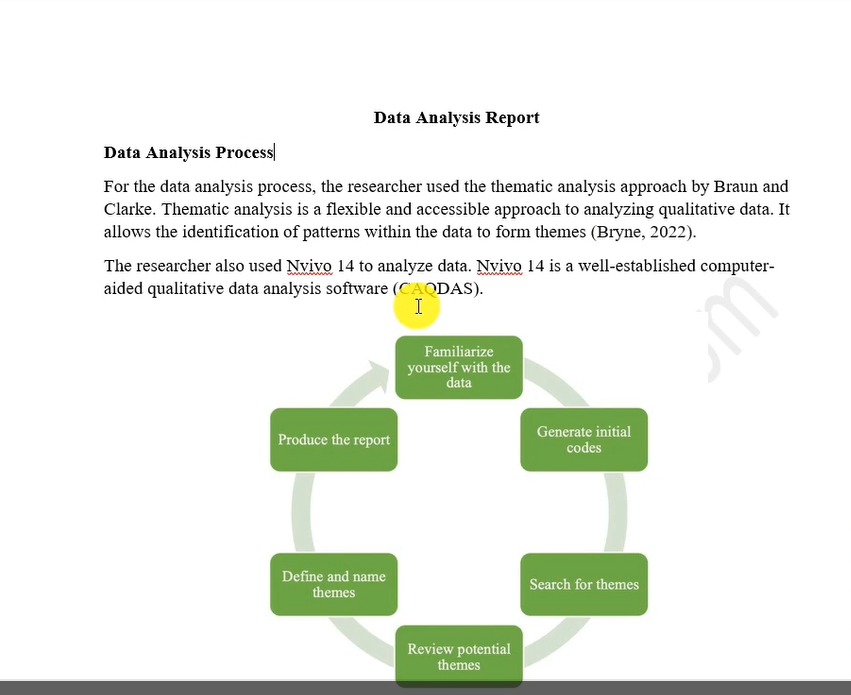
The Data Analysis Process
The data analysis process will simply include describing the steps you took to analyse the data or to go from raw data to having themes.
In most of the instances where I’m using the inductive approach to thematic analysis, I will describe the six steps of thematic analysis as prescribed by Braun and Clarke.
The findings report also contains some tables like this.
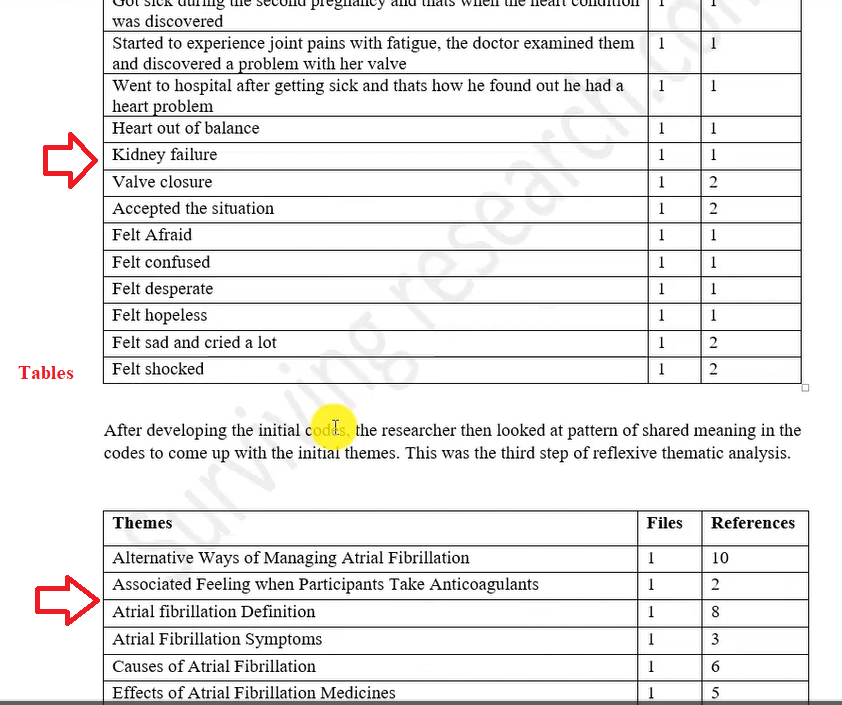
Tables in a Findings Report
Where do we get all these?
After we finish analysing our data in Nvivo, and we get our themes, we can press Control A on our data, go to export and export list.
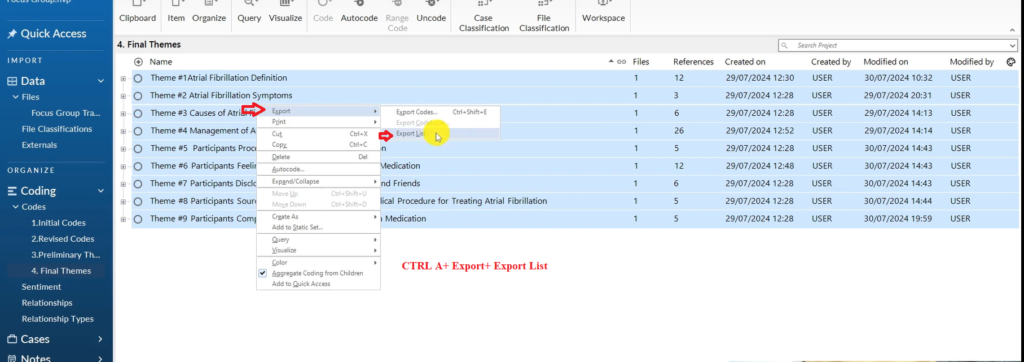
The Process of Exporting the Code List in Nvivo
What this does is, it gives us a list of final themes.
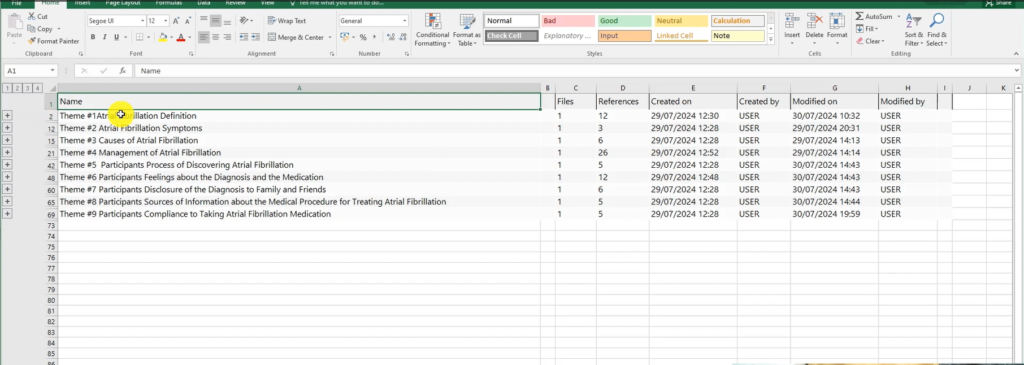
The List of Final Themes
And then, I can go to my complete Nvivo, and go to share, export, export codebook, and I can export a codebook here.
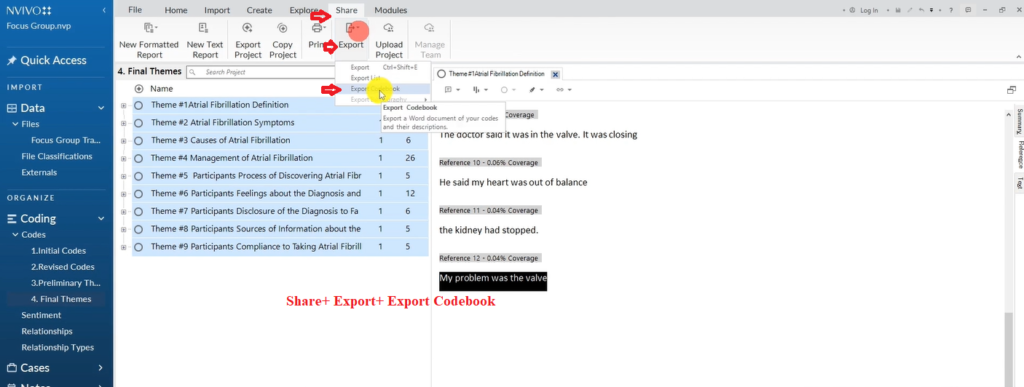
The Process of Exporting the Codebook
This is the code book.

A Codebook
The codebook contains the theme and their definitions. It also contains the subthemes and their definition and the codes.
Basically, those are some tables of our coding structure that we can extract in Nvivo, so that we can use those tables in the first section of our data analysis report where we explain our data analysis process.
After we explain our data analysis process, we start discussing the findings.
To discuss the findings, you just need to explain what themes and subthemes mean.
For example, for the first theme, will discuss it as shown below.
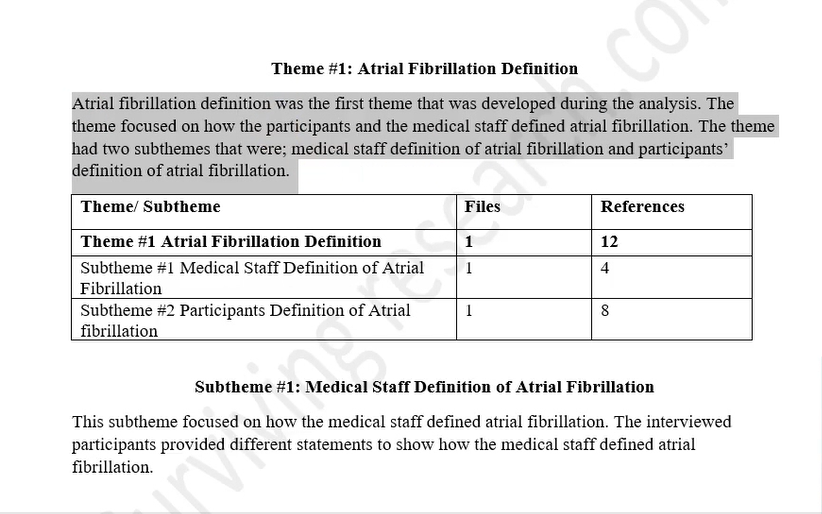
A Discussion of a Theme
After explaining each theme, we then go and discuss the codes and provide the participants quotes. This are what the participant said as evidence to the codes.
The quotes are shown below and are usually in italics.
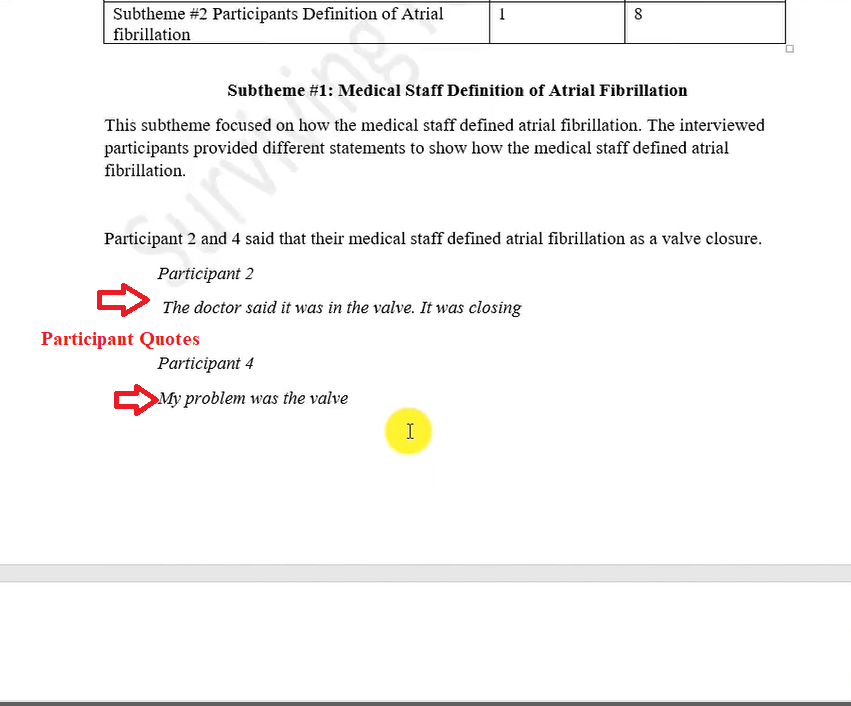
Participant Quotes
In findings report, we also have some visuals like this.
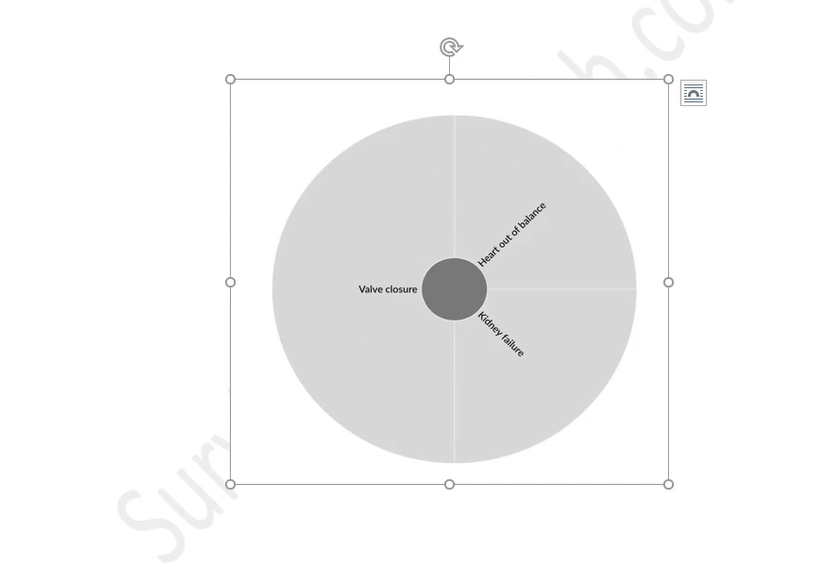
A Hierarchy Chart
Then we also have another kind of visual, called a mind map.
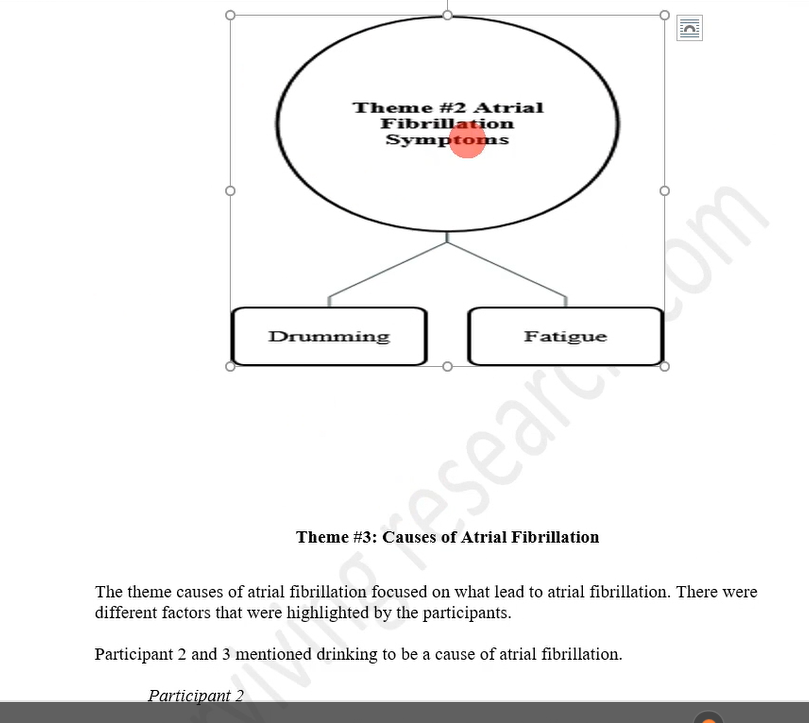
A Mind Map
Those are the visuals you can include in the findings report.
To learn more on how to create hierarchy charts and mind maps, watch this video 9 Ways to Visualize in Nvivo.
And that’s how we write the findings report.
